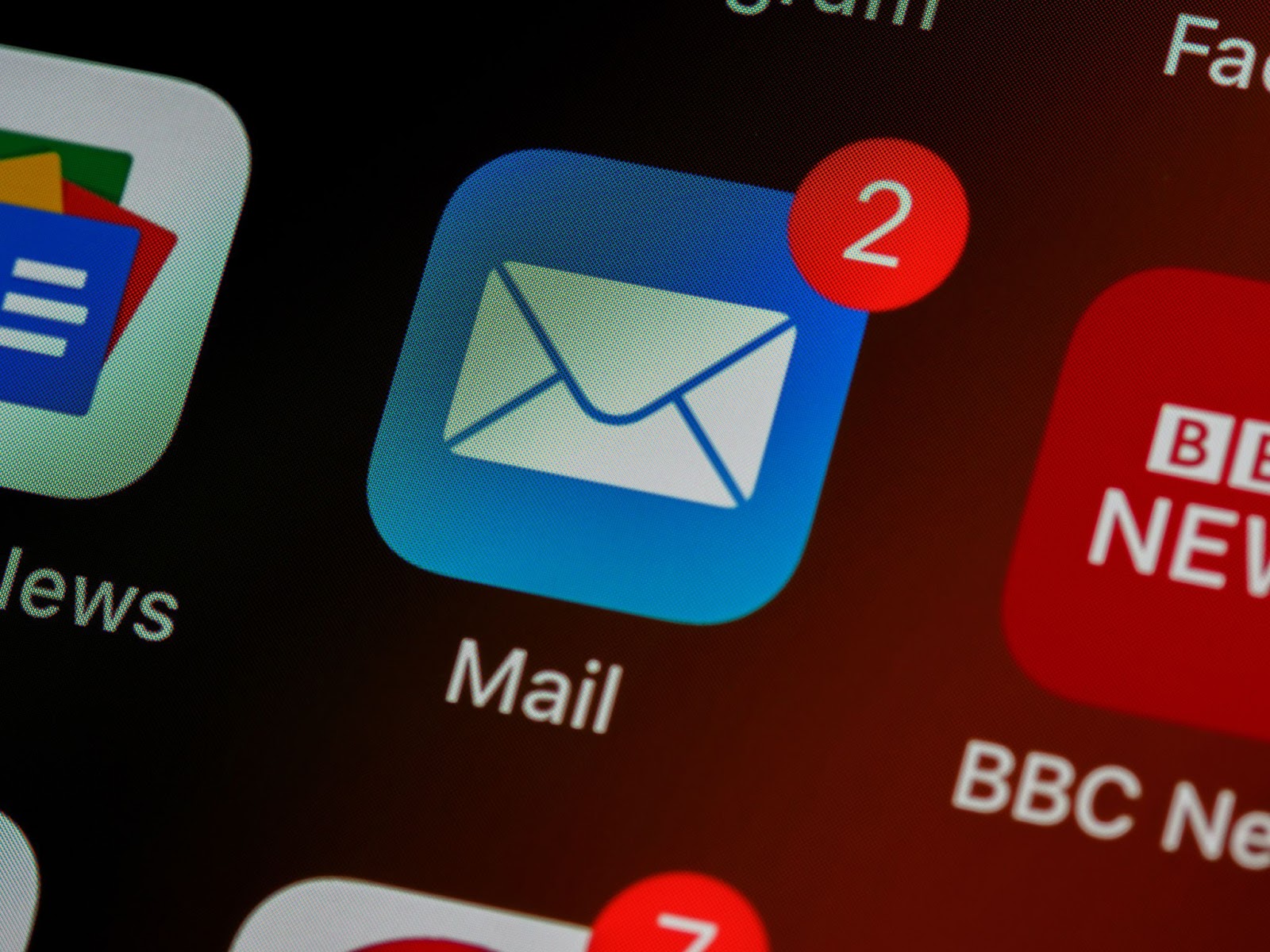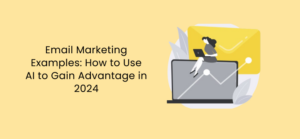According to email usage statistics, 99% of people in the UK check their personal emails daily. Are your marketing emails among the ones that they open, or could your campaigns do better?
Most business owners want to see better results. Marketers consider an open rate of around 15% to be relatively good, but that leaves a lot of business on the table. Is there a better way?
According to Statista, email marketing ties with digital marketing to take second place as the most popular marketing technique. As seen in the chart below, only social media marketing outperforms it in the popularity stakes.

There’s no question that social media marketing is effective, but it can be expensive and time-consuming. Email marketing is a lot simpler, more cost-effective, and maybe a better return on investment.
Unfortunately, using email to market your business is a tricky prospect today. With the flood of messages that assail customers, it’s difficult to stand out from the crowd. In 2020, 306 billion emails exchanged hands. Unless your campaigns hit all the right notes, they’ll disappear into obscurity.
You’re probably wondering how you can optimize your campaigns. There are several tricks and tips out there, and you’re welcome to try them.
You could, however, be wasting your time.
Why? It’s simple—no set of generic tips will work in every situation. To appeal to your target market, you need a more customized approach.
That’s why, in this article, we’re not discussing how to optimize your email campaigns. There are many articles about that online already. Instead, we’ll discuss the essential marketing KPIs you should monitor. The data you gather will help you to tweak your campaigns and discover the winning formula.
Does that sound good? Let’s not waste any more time and dive into the article.
What Are Good Email Marketing Metrics?
In short, you should focus on the following KPIs:
- List growth rate
- Conversion rate
- Click-through rate
- Bounce rate
- Open rate
- Email sharing rate
- Unsubscribe rate
- Overall ROI

Take a Minute to Set Your Goals First
Before you start, however, take a little time to set your campaign goals. Do you wish to convert clients, increase the number of subscribers, or generate more leads? You may choose one goal or several, as long as you carefully define what you want out of the marketing blast.
The goals will determine the tone and content of the email and who you send it to. Now that we’ve sorted that detail out let’s look at each metric in more detail.
-
List Growth Rate
Every salesperson understands that it’s better to focus on qualified leads. To successfully grow your business, however, you need leads coming in at a steady rate. The same principle applies to your subscriber list, as natural attrition can have a significant impact over time.
Here’s how to calculate your list growth rate:
- Add the number of spam reports or complaints and unsubscribes
- Subtract that total from your overall number of new subscribers
- Divide the answer by the number of email addresses your database contains
- Multiply the answer by 100
Why Care?
You should care because this stat indicates how relevant and useful your emails are to your subscribers. All email lists are subject to some attrition. People may lose interest, unsubscribe, mark the email as spam, or change their address.
If you have an email list growth rate of 4% but took on 25% new subscribers, it’s time to rethink your campaign. What is chasing your subscribers away?
-
Conversion Rate
Remarkable list growth and a high number of click-throughs mean nothing if the conversions don’t also increase. Your conversion rate is the number of people who clicked the email link, visited your site, and performed the way that you hoped they would.
Here’s how to calculate your conversion rate:
- Divide the number of emails sent by the number of subscribers who acted on the email as you intended
- Multiply the result by 100 to get the percentage
With this metric, we see why it’s so important to set goals ahead of time. Say, for example, that you talk about a free download in your email, but they land on a page selling a product. The customer will automatically think, “clickbait.”
Instead, let them see the download clearly on your landing page. You may then add an enticement to keep them reading about your product.
The last thing to note is that you must integrate your web analytics with your email program so that you can see what actions your client performed. Perhaps they went to the landing page and no further. Maybe they came back a day or two later and bought it.
Without good web analytics, you’ll never know what the full extent of your campaign is.
Why Care?
The conversion rate is the most critical indicator of success in your campaigns. A high open rate, coupled with a low conversion rate, means that you should rethink the campaigns.
-
Click-through Rate (CTR)
Technically speaking, we should have listed the CTR before conversions because it’s what comes first chronologically. We didn’t, however, because the CTR is less critical than conversions.
Here’s how to calculate your CTR:
- Divide the total number of clicks attributed to the email campaign by the number of emails delivered.
- Multiply the result by 100
Say, for example, that you have a thousand subscribers, all of whom click through to your site. If you sent a thousand emails, and everyone clicked to your website, you’d have a 100% CTR.
And here’s why you must analyze CTR in conjunction with other statistics. In our example, everyone clicked through to the site. If we look at what they did there, however, the campaign didn’t do well at all:
- 50 subscribers converted
- 550 bounced off within seconds
- 400 looked at the page for a little but took no further action
The conversion rate here is only 5%. However, what should be of concern is that 55% of the visitors clicked away from your site immediately.
Why Care?
That 55% of subscribers liked the email enough to click through but bounced right off your site. This means that:
- The email seemed misleading to them when they got to the website
- There was little connection between the email and site content
- Your landing page needs work aesthetically
By monitoring your CTR, you can determine what elements in your emails attract your target market’s attention. Marketers often use this in conjunction with A/B split testing to tweak their messages.
-
Bounce Rate
This section may be a little confusing because we discussed subscribers bouncing away from your site in the previous one. In this section, we will instead look at the bounce rate of the emails themselves.
How many emails made it through to the inbox of the person you were targeting?
Here’s how to work out your bounce rate:
- Divide the number of emails sent by the number of bounced emails
- Multiply the result by 100 to receive a percentage
You may have to separate this into two calculations:
- Hard bounces: in such cases, the email address is either closed, invalid, or has blocked your address. Remove these email addresses from your list immediately. If you don’t, your provider might mark you as a spammer.
- Soft bounces: A soft bounce is a temporary error. It could be that the client’s email account is full, or their provider is temporarily down.
Here’s how to calculate your bounce rate:
- Divide the total number of emails you sent by the total number of emails that bounced back
- Multiply the answer by 100 to get a percentage
- You should further check which were hard bounces and which were soft bounces
Why Care?
A bounce rate doesn’t seem that important when it comes to achieving your goals. After all, you have little control over whether your client’s email box is full. It’s still a metric worth investigating because it speaks to the validity of your subscribers’ sign-up methods.
Are people using one-off emails they delete after a day to get the information? Could your employees be recording the wrong email address when they sign a customer up? Aside from the wasted effort, a high bounce rate skews your stats.
-
Open Rate
The open rate refers to how many subscribers open and read your email. You don’t need to calculate the stretch yourself; your CRM software will do it for you.
There are plenty of tricks and tips out there to improve this rate, but the best advice is to create emails that your subscribers want to read. Optimize your CTR instead.

The open rate is not as simple as you might think. Most software only considers emails opened if all the images in the message are received. Since many consumers today block images and emails, there’s a chance that they’ve opened and read your email, but it hasn’t registered with the software.
As a result, for companies sending out images in their emails, the open rate is not the most accurate statistic. It’s best to consider this darter in conjunction with the click-through and conversion rates.
Why Care?
Where the open rate becomes useful is when you compare it to previous values. You could, for example, compare open rates between Christmas of this year and the last two years. You could also see if open rates are declining or improving.
-
Email Sharing Rate
This metric refers to the number of people who shared your email via social media or forwarded it.
Here’s how you can work out your email sharing rate:
- Divide the total number of emails delivered by the number of clicks on the forward or share button
- Multiply this figure by 100
Why Care?
Don’t dismiss this metric as an insignificant one. The higher the rate, the more exposure your email gets. More importantly, you may receive new subscribers and clients.
People are likely to be attentive to the message because they’ve received it from someone that they know or trust. They may not know your company or what it does, but they know the person who sent them the message.
It’s worth tracking this metric because it gives you an indication of what your clients respond to. You can identify formats and styles that work best and replicate popular options.
-
Unsubscribe Rate
The unsubscribe rate is the ones who remove their names from your sending list. Again, this is a relatively simple metric, as your CRM system will detail the number of people who unsubscribe.
We’ve kept it low in this list because it’s not the most accurate metric. Your subscribers may not bother to unsubscribe and instead fill your messages out or ignore them. That said, it’s still worth keeping an eye on these figures to detect an upward trend.
The unsubscribe rate should not, however, be used in isolation.
Why Care?
You do need your unsubscribe rate to calculate your list’s growth overall. As a result, monitor it once a month or so.
-
Overall Return on Investment (ROI)
The ROI for your campaign refers to how much profit is made.
Here’s how to calculate your ROI:
- Subtract the cost of the campaign from the overall number of sales as a result of it
- Divide that figure by the cost of the campaign
- Multiply your answer by 100 to get a percentage
This is a straightforward ROI calculation, and there are more complex methods you can use if you prefer. The point is that you have to have a way to determine if the money you’re spending on the campaign is worth it.
A break-even campaign, for example, maybe seen as a failure because of the opportunity cost. Your team could have been working on something that would have been far more successful.
Why Care?
Establishing the ROI of any marketing campaign is essential to maximizing your profits. You can then determine which direction to take for future campaigns and which ones aren’t worth the effort.
Now That You’ve Crunched the Numbers
Okay, it looks like you’ve got some homework to do. We covered a wide range of metrics here. Is it more work for your marketing team? Initially perhaps, but over time you’ll see better results, and your campaigns will improve.
Your clients will receive relative marketing offers that they appreciate, and customer satisfaction will grow. They may even start sharing your emails or become brand ambassadors.
Keeping your email list up-to-date and utilizing it effectively is one of the best ways to grow your business. With the right metrics in your corner, you’ll be able to determine what works and what doesn’t.
Want to grow your email list effectively and affordably? Create email popups with Poptin now!




